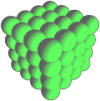- Home
- Golden Math
- Flower of Life
- Sacred Solids
- And much more...
- 3D Models
- 3D Flower of Life
- 3D Platonic Solids
- 3D Archimedean Solids
- 3D Catalan Solids
- 3D Deltoidal Hexecontahedron
- 3D Deltoidal Icositetrahedron
- 3D Disdyakis Dodecahedron
- 3D Disdyakis Triacontahedron
- 3D Pentagonal Hexecontahedron
- 3D Pentagonal Icositetrahedron
- 3D Pentakis Dodecahedron
- 3D Rhombic Dodecahedron
- 3D Rhombic Triacontahedron
- 3D Tetrakis Hexahedron
- 3D Triakis Icosahedron
- 3D Triakis Octahedron
- 3D Triakis Tetrahedron
- 3D Pyramids and Prisms
- 3D Stellations
- Phi in ...
- Sacred Solids in ...
- Music and Geometry
- About
- 3D Models
- Sacred Geometry and Energy
Platonic Solids
There are only five polyhedra that can be made using a regular polygon as their faces and having the same number of this polygons meet at each vertex. The five Platonic Solids are the tetrahedron, cube, octahedron, icosahedron and dodecahedron (Figure 1).
| TETRAHEDRON | CUBE | OCTAHEDRON | ICOSAHEDRON | DODECAHEDRON |
|---|---|---|---|---|
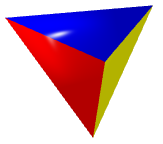 |
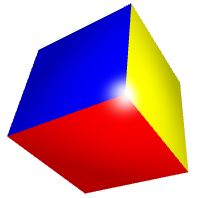 |
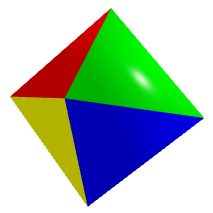 |
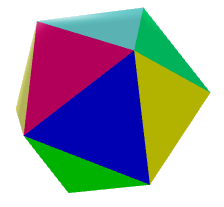 |
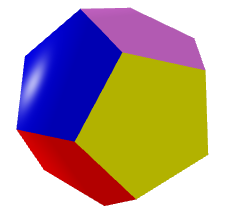 |
| Figure 1: The Platonic Solids. Click to see a 3D Model that you can zoom and rotate. | ||||
The following table describes the main properties of the Platonic Solids. The Dual of a solid is the polyhedron obtained joining the centers of adjacent faces; therefore, the dual has the number of vertices and edges interchanged. The Three-dimensional Constructive Coefficient gives an idea of the complexity of a solid.
| PLATONIC SOLID | PICTURE | NUMBER OF FACES | FACES PER VERTEX | VERTICES | EDGES | THREE-DIMENSIONAL COSNTRUCTIVE COEFFICIENT | DUAL SOLID | PICTURE |
|---|---|---|---|---|---|---|---|---|
|
TETRAHEDRON |
 |
4 | 3 | 4 | 6 | 1 | TETRAHEDRON |
 |
| CUBE |
 |
6 | 3 | 8 | 12 | 2 | OCTAHEDRON |
 |
| OCTAHEDRON |
 |
8 | 4 | 6 | 12 | 2 | CUBE |
 |
| ICOSAHEDRON |
 |
20 | 5 | 12 | 30 | 5 | DODECAHEDRON |
 |
| DODECAHEDRON |
 |
12 | 3 | 20 | 30 | 5 | ICOSAHEDRON |
 |
| Table 1: Main properties of the Platonic Solids | ||||||||
